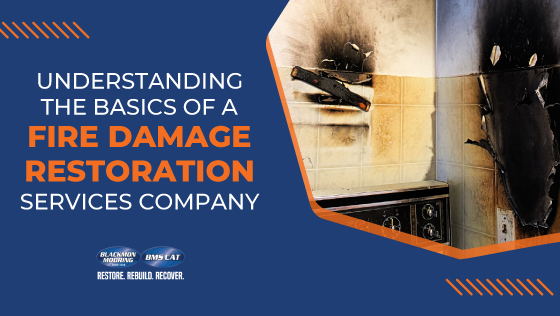Experiencing a fire in your home or business can be a devastating event. The aftermath can leave you feeling overwhelmed and uncertain about where to begin. Fire damage restoration is a crucial process that helps restore your property to its pre-fire condition. This comprehensive guide will walk you through the steps involved in fire damage restoration, helping you understand what to expect and how to navigate this challenging time.
The Impact of Fire Damage
Fire damage can be extensive and multifaceted. It includes:
- Structural Damage: The heat from the fire can weaken the structural integrity of your building, making it unsafe.
- Smoke and Soot Damage: Smoke and soot can permeate walls, furniture, and personal belongings, leaving a lasting odor and potential health hazards.
- Water Damage: Water used to extinguish the fire can cause additional damage, including mold growth if not addressed promptly.
- Loss of Personal Items: Fires often result in the loss of valuable and sentimental items, which can be emotionally distressing.
Steps in Fire Damage Restoration
Fire damage restoration is a multi-step process that requires professional expertise. Here’s a detailed breakdown of each stage:
1. Emergency Contact and Assessment
- Emergency Contact: The first step is to contact a reputable fire damage restoration company. Many companies offer 24/7 emergency services to respond quickly to fire damage incidents.
- Assessment: Upon arrival, the restoration professionals will conduct a thorough assessment of the damage. This includes inspecting the property to determine the extent of the fire, smoke, and water damage. The assessment helps create a detailed plan of action and an estimate of the restoration costs.
2. Securing the Property
- Board-Up and Roof Tarping: To prevent further damage and ensure safety, the restoration team will secure the property. This may involve boarding up windows, doors, and other openings, and placing tarps over damaged roofs to protect against the elements.
3. Water Removal and Drying
- Water Extraction: If water was used to extinguish the fire, removing standing water is a critical first step. Specialized equipment such as pumps and wet vacuums are used to extract water quickly.
- Drying and Dehumidification: After water extraction, the property must be thoroughly dried to prevent mold growth. Industrial-grade dehumidifiers and air movers are used to dry out walls, floors, and other structures.
4. Smoke and Soot Removal
- Cleaning: Smoke and soot can cause significant damage to surfaces and personal belongings. Professional cleaners use specialized techniques and equipment to clean and sanitize affected areas, including walls, ceilings, and floors.
- Odor Removal: Smoke odor can linger long after the fire is extinguished. Restoration professionals use advanced deodorization techniques and equipment, such as thermal foggers and ozone generators, to remove odors effectively.
5. Cleaning and Sanitizing Personal Belongings
- Content Cleaning: Personal items, such as clothing, furniture, and electronics, can often be salvaged through professional cleaning methods. Items are carefully cleaned, deodorized, and sanitized.
- Document and Media Recovery: Important documents and media that have been damaged by fire or water can often be restored using specialized techniques. This includes freeze-drying for paper documents and data recovery for electronics.
6. Structural Repairs and Reconstruction
- Repairs: Structural repairs may involve replacing damaged drywall, painting, installing new carpeting, or rebuilding entire sections of the property. Skilled contractors handle these repairs to ensure the property is restored to its pre-fire condition.
- Reconstruction: In cases of severe damage, reconstruction may be necessary. This involves more extensive building work to restore the structural integrity of the property.
The Importance of Professional Fire Damage Restoration
Hiring a professional fire damage restoration company is crucial for several reasons:
- Expertise and Experience: Restoration professionals have the knowledge and experience to handle fire damage effectively. They understand the complexities of different types of damage and the best methods for restoration.
- Specialized Equipment: Professionals use specialized equipment and techniques to remove smoke, soot, and water, and to restore damaged items and structures.
- Safety: Fire-damaged properties can be hazardous. Restoration professionals are trained to handle these dangers safely, ensuring the property is secure for occupants.
- Efficiency: Professional restoration teams work quickly and efficiently to minimize damage and begin the restoration process, reducing the overall disruption to your life or business.
Insurance and Fire Damage Restoration
Navigating insurance claims can be a daunting task in the aftermath of a fire. Here are some tips to help you through the process:
- Contact Your Insurance Company: Notify your insurance company as soon as possible after the fire. They will guide you through the claims process and inform you of the coverage you have.
- Document the Damage: Take photos and videos of the damage for your records and to provide to your insurance company. Detailed documentation will help with your claim.
- Keep Receipts: Save receipts for any expenses related to the fire and the restoration process. This includes temporary housing, meals, and restoration costs.
- Work with Your Restoration Company: Many restoration companies will work directly with your insurance company to streamline the claims process and ensure you receive the coverage you’re entitled to.
Preventing Future Fires
While it’s impossible to eliminate the risk of fire entirely, there are steps you can take to reduce the likelihood of future fires:
- Install Smoke Alarms: Ensure smoke alarms are installed in key areas of your property and test them regularly.
- Maintain Electrical Systems: Regularly inspect and maintain your electrical systems to prevent electrical fires.
- Practice Fire Safety: Follow fire safety practices, such as not leaving candles unattended, keeping flammable materials away from heat sources, and using fire-resistant building materials.
- Create an Emergency Plan: Have a fire emergency plan in place, including evacuation routes and a designated meeting spot.
Conclusion
Fire damage restoration is a complex and multi-step process that requires professional expertise and equipment. Understanding the stages involved can help you navigate this challenging time and make informed decisions. While the immediate aftermath of a fire can be overwhelming, a reputable fire damage restoration company can help restore your property to its pre-fire condition efficiently and safely. By taking preventative measures and working closely with your insurance company, you can minimize the impact of fire damage and protect your property for the future.


